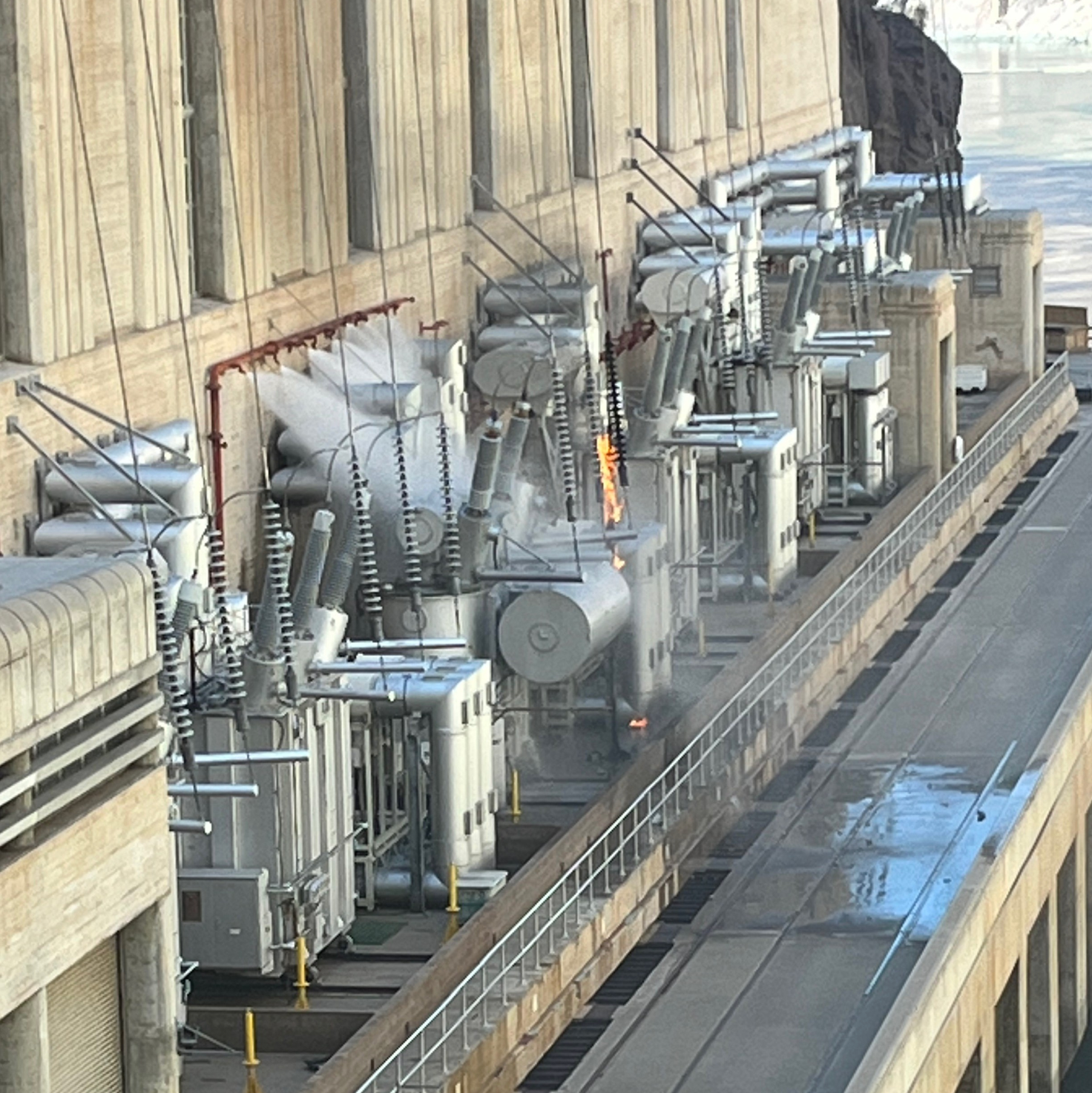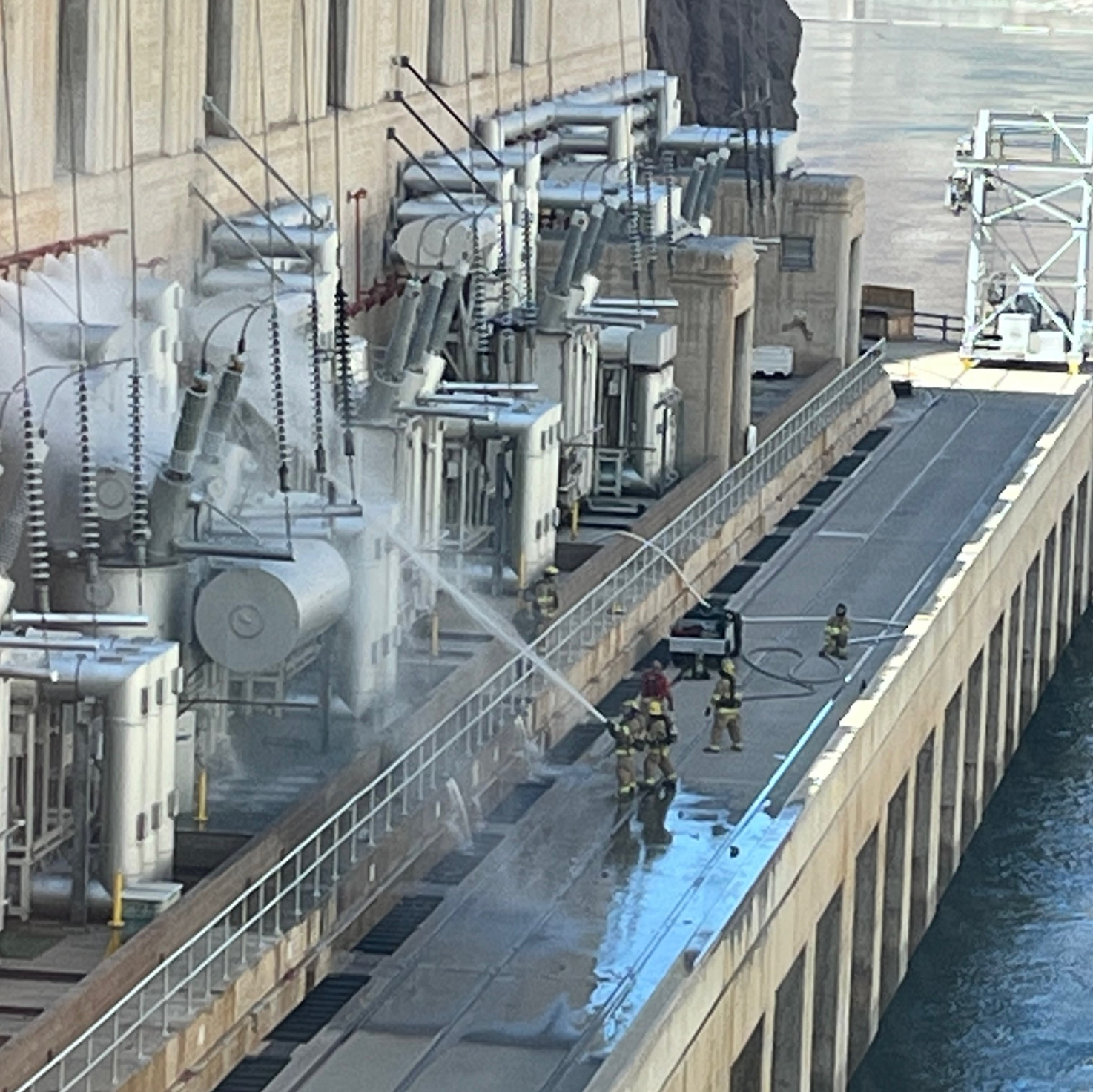Explosion and fire reported at Nevada’s Hoover Dam
The Lower Colorado Regional Director at the Bureau of Reclamation confirmed that no visitors or employees were hurt in the explosion and fire
Your support helps us to tell the story
From reproductive rights to climate change to Big Tech, The Independent is on the ground when the story is developing. Whether it's investigating the financials of Elon Musk's pro-Trump PAC or producing our latest documentary, 'The A Word', which shines a light on the American women fighting for reproductive rights, we know how important it is to parse out the facts from the messaging.
At such a critical moment in US history, we need reporters on the ground. Your donation allows us to keep sending journalists to speak to both sides of the story.
The Independent is trusted by Americans across the entire political spectrum. And unlike many other quality news outlets, we choose not to lock Americans out of our reporting and analysis with paywalls. We believe quality journalism should be available to everyone, paid for by those who can afford it.
Your support makes all the difference.An explosion and subsequent fire has shocked visitors at the Hoover Dam in Nevada.
“Boulder City Fire Department is en route to an emergency call at Hoover Dam. No further information is available at this time,” Boulder City tweeted at 1.30pm ET on Tuesday.
A Twitter user named Kristy Hairston shared a video at 1.11pm ET, saying that she was “touring the Hoover Dam” when she “heard an explosion”.
“My goodness, something has just blown up,” a witness can be heard saying in the video.
Closer to 2pm ET on Tuesday, Boulder City tweeted that “the fire was extinguished before Boulder City Fire Department arrived on scene”.
The Lower Colorado Regional Director at the Bureau of Reclamation Jacklynn Gould, said in a statement that “at approximately 10am PDT, the A5 transformer at Hoover Dam caught fire and was extinguished by the Reclamation/Hoover fire brigade at approximately 10.30am”.


“There are no injuries to visitors or employees. There is no risk to the power grid and power is still being generated from the powerhouse,” she added. “We are investigating the cause of the fire and will provide additional updates as they are available.”
In a video shared on TikTok, user @iris_jaded said: “We saw it explode. It was very big.”
“The bridge we’re standing now is shaking,” she added.
Texas Democratic congressional candidate Russell Foster tweeted: “Texas and the American West is on fire. The Hoover Dam just had an explosion. Heatwaves all across the northern hemisphere this week. London is burning. It’s not going to get any better around the world until we address our climate emergency. We can’t cope, we must fix this problem.”
The Hoover Dam is one of the most famous pieces of civil engineering in the United States, and is a major tourist attraction as well as an essential power source for much of the West.
The dam impounds Lake Mead, which when full in non-drought years is the largest reservoir in the US. Lake Mead provides water to Arizona, California, and Nevada as well as some of Mexico. The climate crisis has seen the lake lose water at a dramatic rate during the multi-year drought, which has seen states that rely on its supply see cuts.
The latest report from the US Bureau of Reclamation stated that Lake Mead was just over 1,040 feet above sea level in July. It has dropped nearly 10 feet in the past two months and is currently at just 27 per cent of its maximum capacity.
Much like where Lake Mead provides water, the dam’s generators provide power for public and private utilities in Nevada, Arizona, and California.
Each year the dam generates 4.5bn kilowatt-hours of hydroelectric power for use in the three states, enough to serve around 8m people in the region. The Bureau of Reclamation says that during peak electricity periods, enough water runs through the generators to fill 15 average-sized swimming pools – 20,000 gallons each – in one second.
When operating at full capacity, generators at the hydropower site can supply all the electricity needed by a city of 750,000 people.
Hoover Dam was constructed in the Black Canyon of the Colorado River on the border between Arizona and Nevada.
It was built and is operated by the Department of the Interior’s Bureau of Reclamation. Building work began in 1931, with the dam and power plant completed in 1936.
The dam measures 726.4 ft in height above bedrock, the size of a 60-storey building. The base of the dam is 660ft thick, the size of two football pitches.
The main purpose of the dam is to control the Colorado River during flooding periods to prevent damage to the region below it.




Join our commenting forum
Join thought-provoking conversations, follow other Independent readers and see their replies
Comments